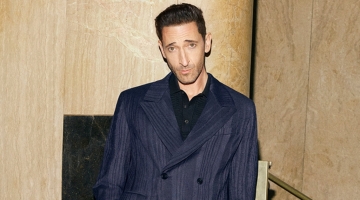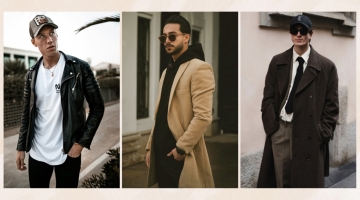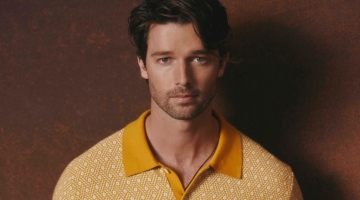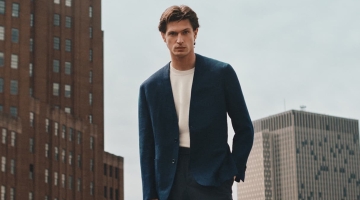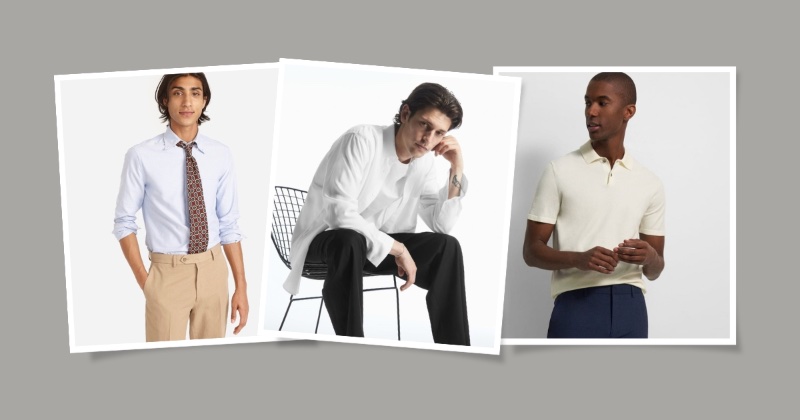
In today’s work environment, the idea of men’s business casual outfits has shifted dramatically. The rigid days of sharp suits and ties, à la Don Draper, are behind us.
Instead, men are embracing a more adaptable approach to workplace style. However, this freedom brings new challenges.
Without clear business casual rules, figuring out what works for less formal settings can be tricky. It’s not about throwing on a T-shirt and calling it a day—it’s about finding the right balance in modern business attire.
Men’s Business Casual Attire
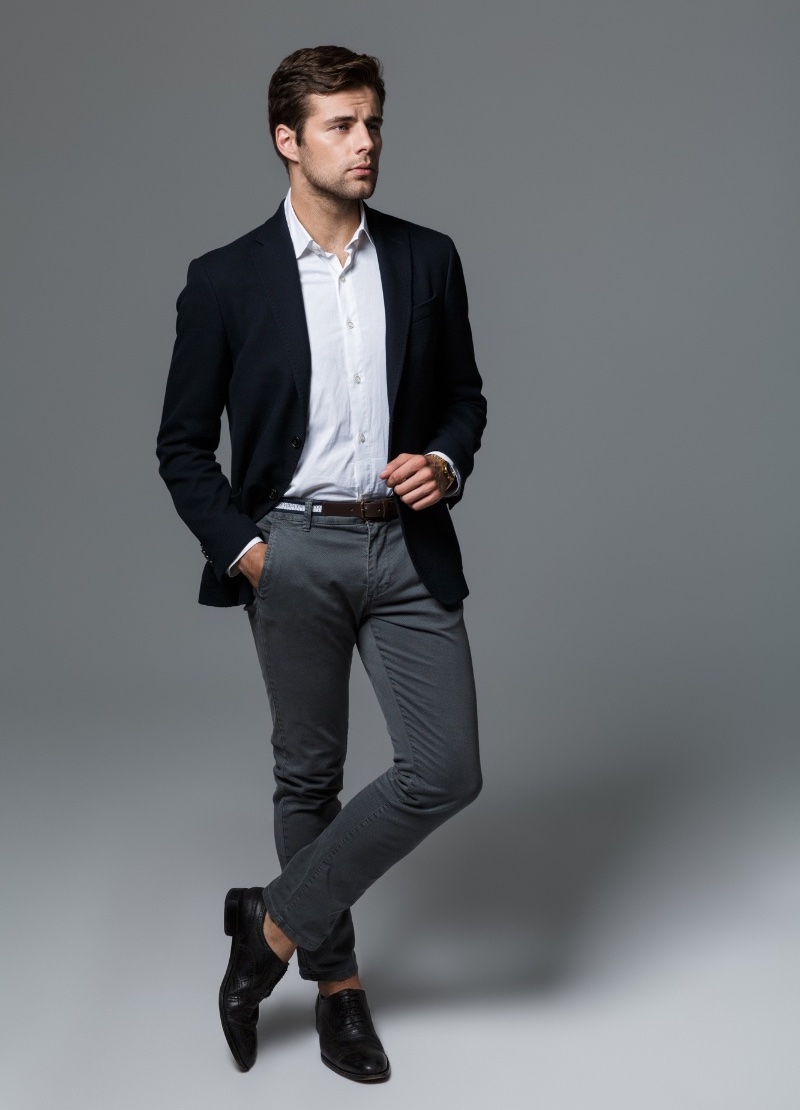
So, what is business casual for men? Business casual combines formal and relaxed clothing for a polished yet approachable look. It might mean pairing a blazer with chinos, a button-down shirt with clean, dark jeans, or a simple T-shirt with tailored trousers.
The key is finding the right mix: formal enough to look professional but relaxed enough to feel at ease in modern work environments.
Business Casual Outfit Essentials
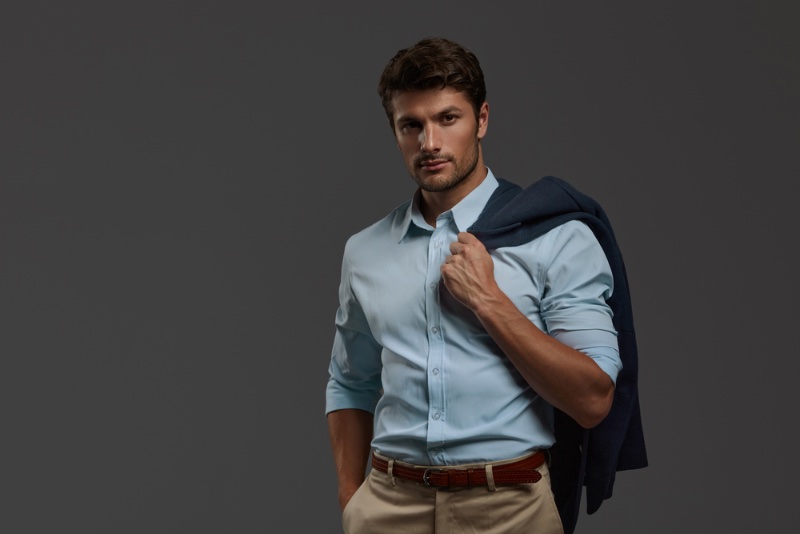
A thoughtfully selected wardrobe for business casual outfits lays the foundation for navigating today’s office dress codes. Key pieces to include in your business casual template ensure a balance between professional polish and personal flair.
Button-down Shirts
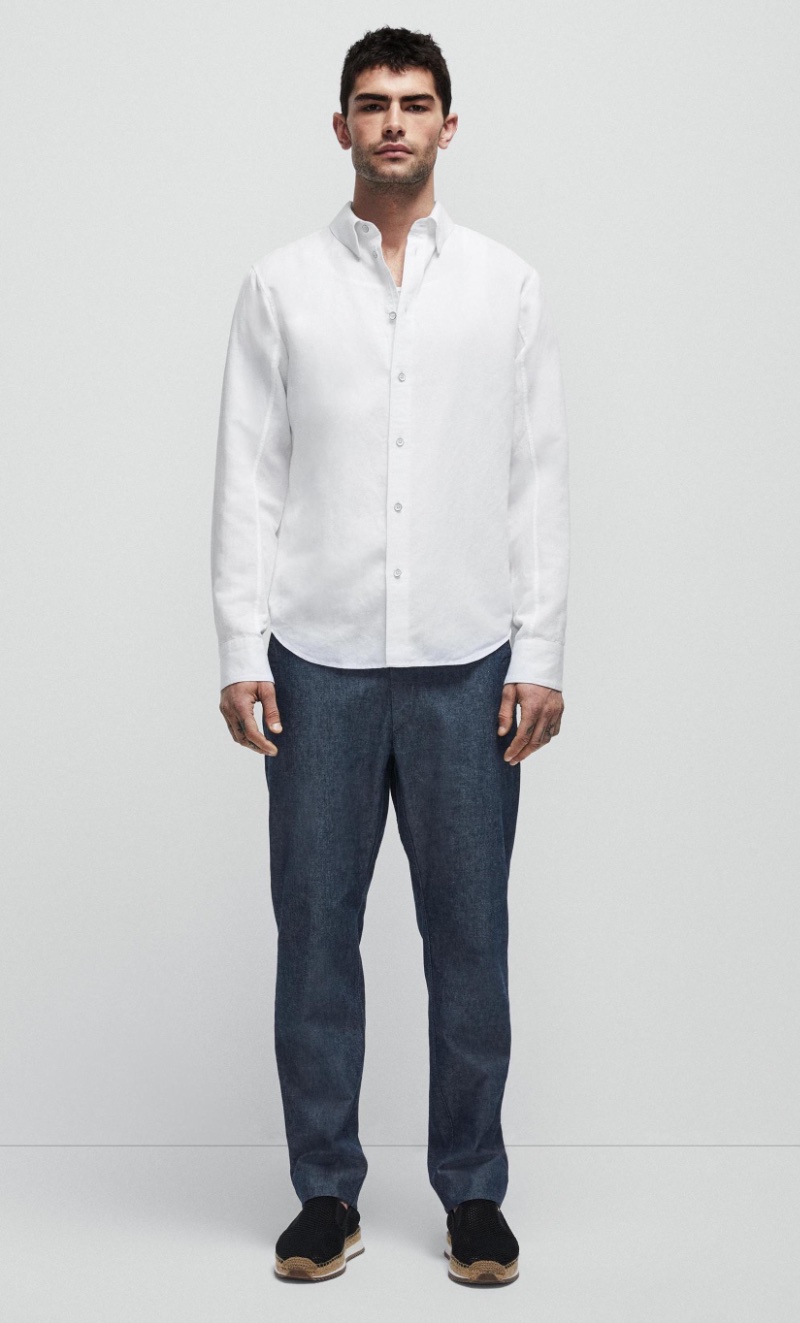
Button-down shirts are a staple of smart business attire, pairing with slacks or chinos for a polished look. When choosing the right shirt, color plays a crucial role.
Timeless muted or neutral shades—such as navy, gray, beige, and black—work well in most professional settings. These versatile tones complement a range of bottoms and maintain a refined appearance.
Blazers & Sports Coats
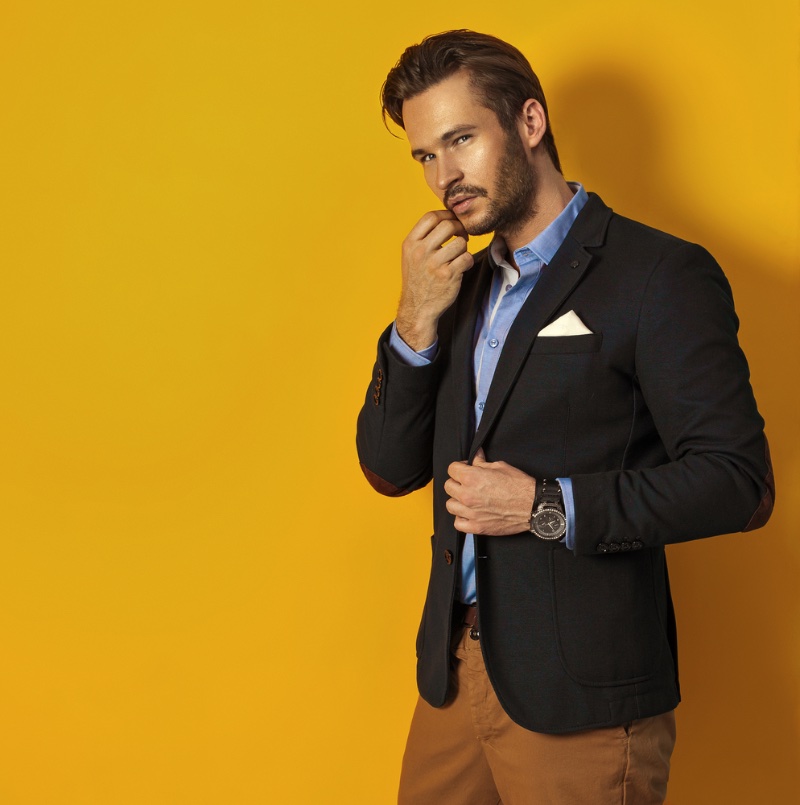
A mid-gray or navy blue blazer serves as a versatile business casual staple, pairing with trousers or chinos, polo shirts, or Oxford shirts. Complete the outfit with leather loafers for an ultra-polished ensemble.
For a more relaxed approach, try layering a sports coat over a high-quality T-shirt and pairing it with jeans and sneakers. Add a coordinating belt and a pocket square for a refined touch.
Oxford Shirts
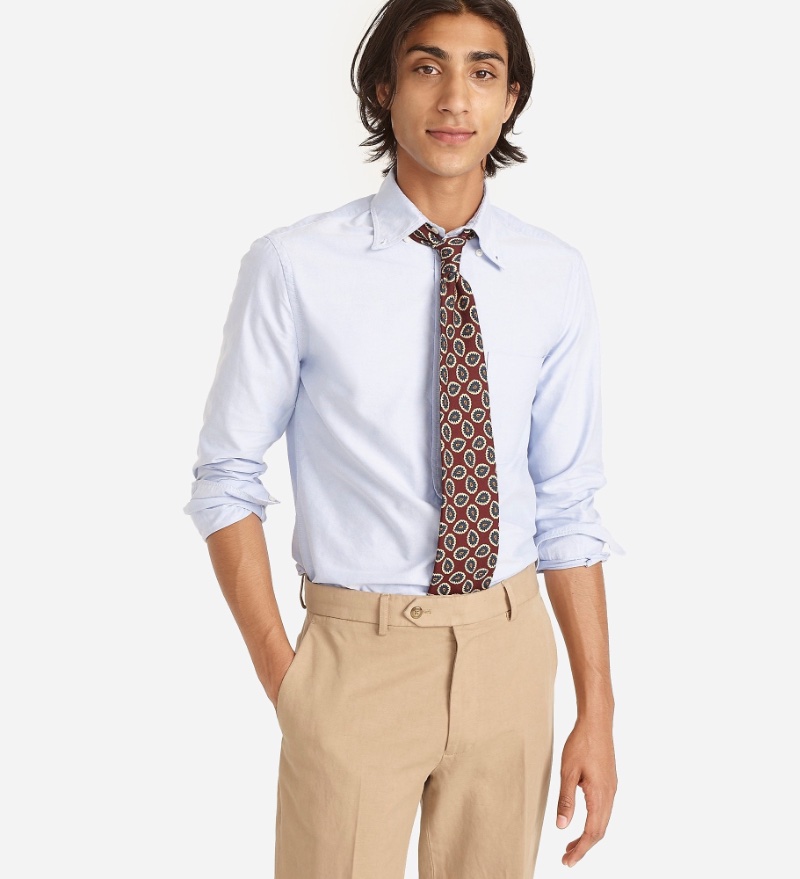
An Oxford shirt stands out with its textured basket-weave fabric and signature button-down collar. A staple in any business wardrobe, it comes in timeless colors like white and light blue.
For a professional look, pair it with tailored trousers, or opt for jeans to achieve a more laid-back vibe. Prioritize high-quality fabrics and well-fitted cuts for an elevated appearance.
To round off a business casual outfit, consider adding sneakers.
Sweaters

Sweaters are a versatile addition to any business wardrobe, perfect for layering and suitable year-round. Whether worn over a button-down shirt or beneath a blazer, they provide warmth while maintaining a polished look.
Opt for practical shades like navy, gray, charcoal, and camel. These colors integrate seamlessly into professional settings, making them a smart choice for business casual dressing.
Men’s Pants or Slacks
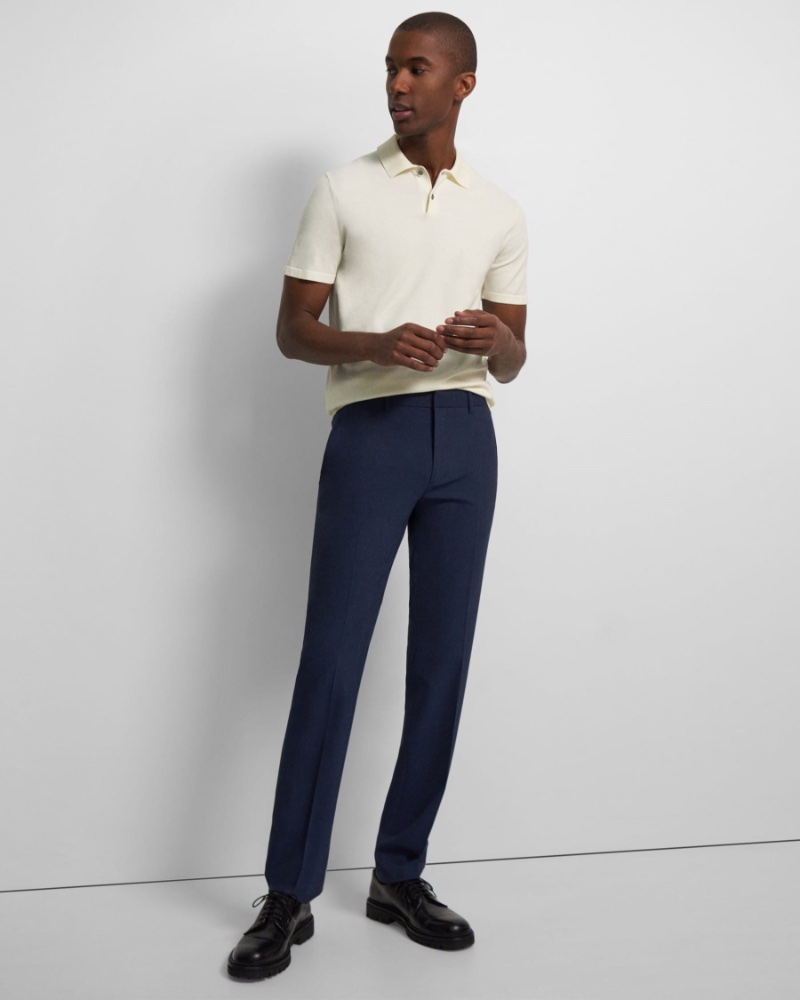
Slacks are a cornerstone of any business wardrobe. Traditional options like wool trousers, fine-wale corduroys, or plain-front dress slacks in neutral tones such as gray, black, or navy provide a classic foundation.
For personality, explore patterned or pinstriped styles in subtle hues. Fit is paramount—ensure the waist sits comfortably and the fabric drapes cleanly down the leg without bunching or bagging.
The T-Shirt
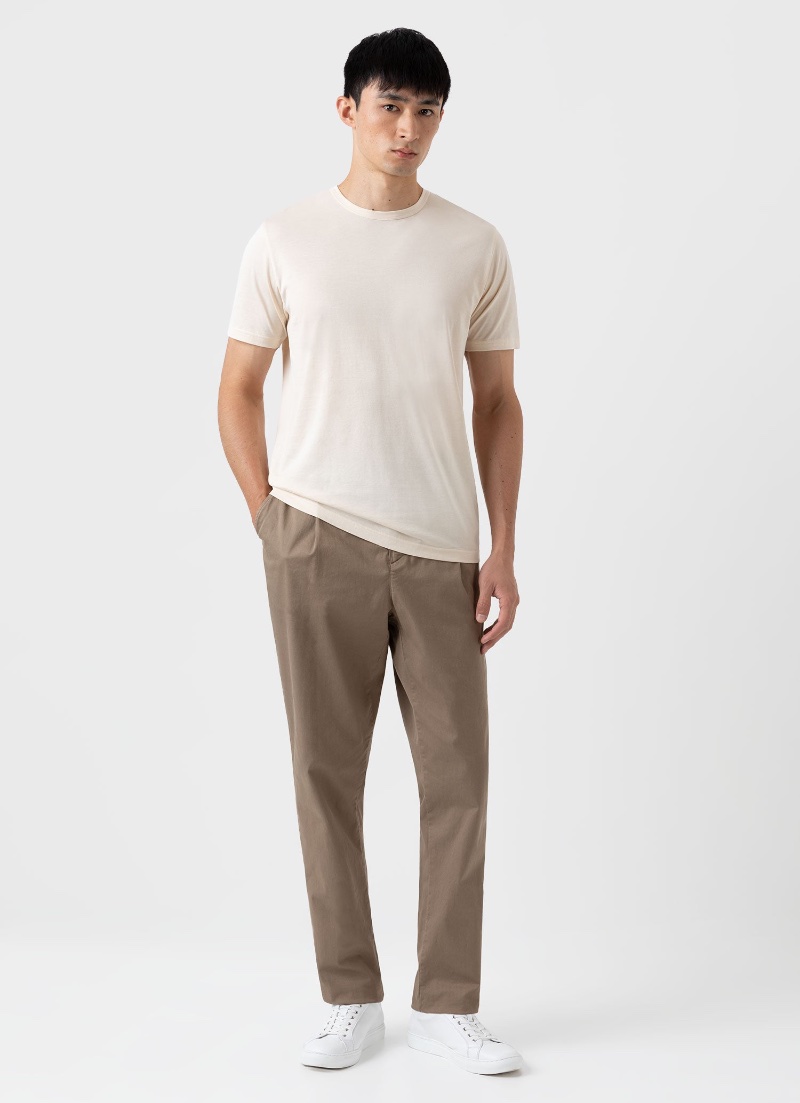
The T-shirt, once reserved for weekend wear or the gym, has become a staple in the business casual wardrobe when styled with intention. A well-fitted, solid-color T-shirt serves as a versatile base layer that can anchor a polished look.
When incorporated into a T-shirt and trousers outfit, it creates a refined yet relaxed style. Pair it with tailored trousers and a blazer to elevate the T-shirt into office-ready sophistication.
Brands like Sunspel and Everlane offer T-shirts crafted with structured fits and premium fabrics, perfect for this ensemble.
Polo Shirts
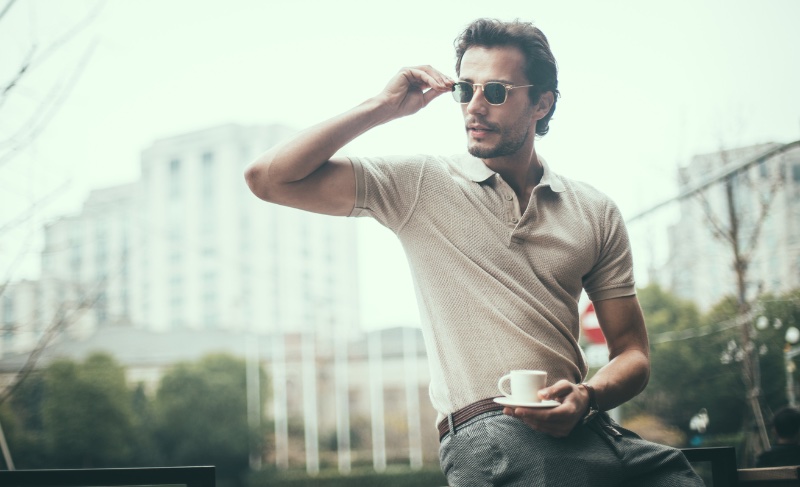
Polo shirts offer a stylish alternative to traditional office wear. Their versatility allows them to be layered with pieces like suit jackets or knit sweaters.
Stick to muted shades such as navy, gray, beige, or black for a timeless aesthetic. Polos transition from day to night, offering a practical choice for modern business attire.
Simply swapping out sneakers for loafers or adding a blazer can elevate the look for evening settings.
Casual Chinos
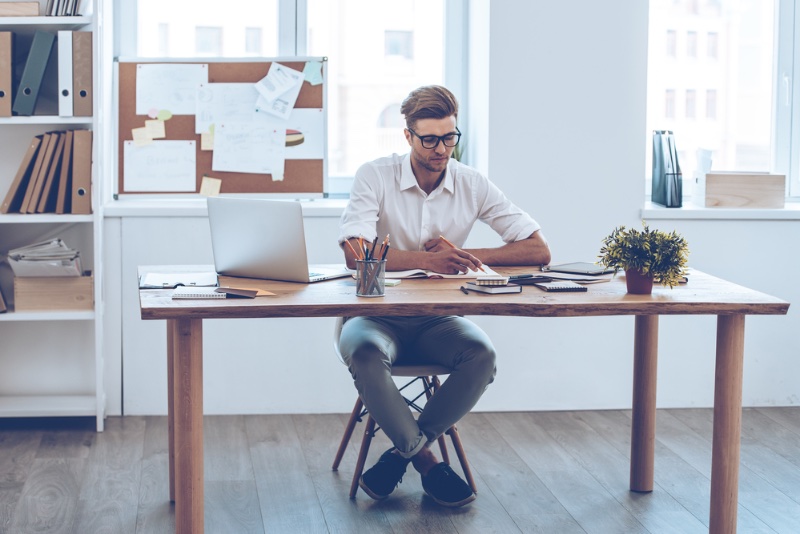
Chino pants adapt to both casual and formal looks. Neutral tones like navy, olive, taupe, and khaki are ideal as they pair with a variety of shirts and shoes.
For a relaxed office outfit, opt for slim-fit chinos in a flat-front or pleated design. To elevate the look for important meetings, combine them with a crisp dress shirt and a tailored sports coat.
Jeans
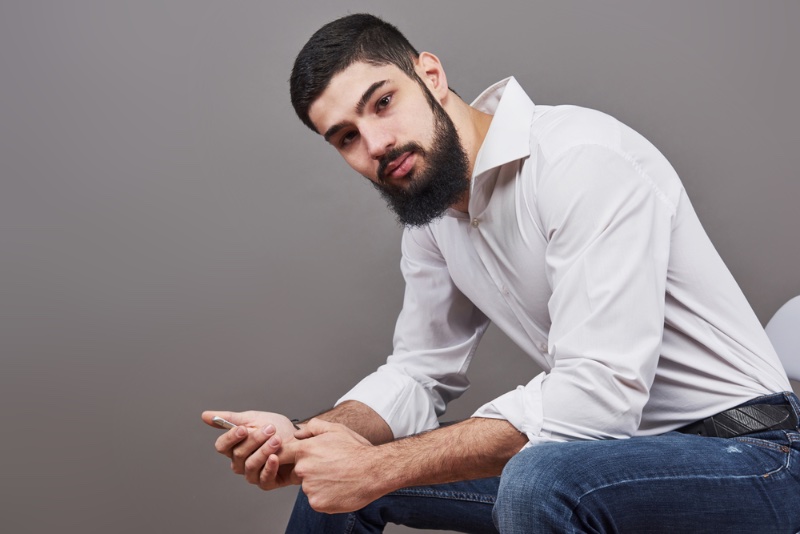
Businss casual jeans can transition between office wear and leisure. Choose dark-wash jeans with minimal fading or distressing, a clean, tailored fit around the waist, and a straight-leg cut for a polished appearance.
Avoid baggy or overly relaxed fits, as they lean too casual for a professional setting. For a smart look, pair your jeans with a crisp button-up shirt and leather shoes.
Business Casual Accessories
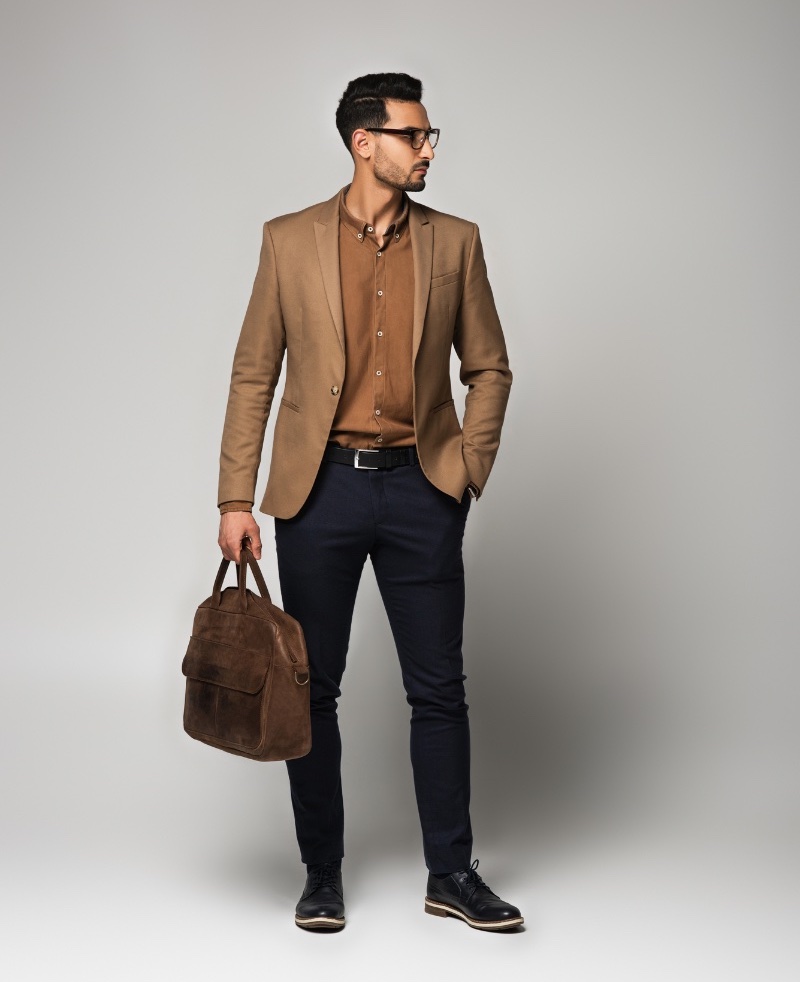
Accessories are often an afterthought in business attire. However, a carefully chosen accessory can elevate even the most straightforward outfit.
Opt for neutral shades like black or gray for a subtle and refined touch that complements your overall ensemble.
Leather Belts
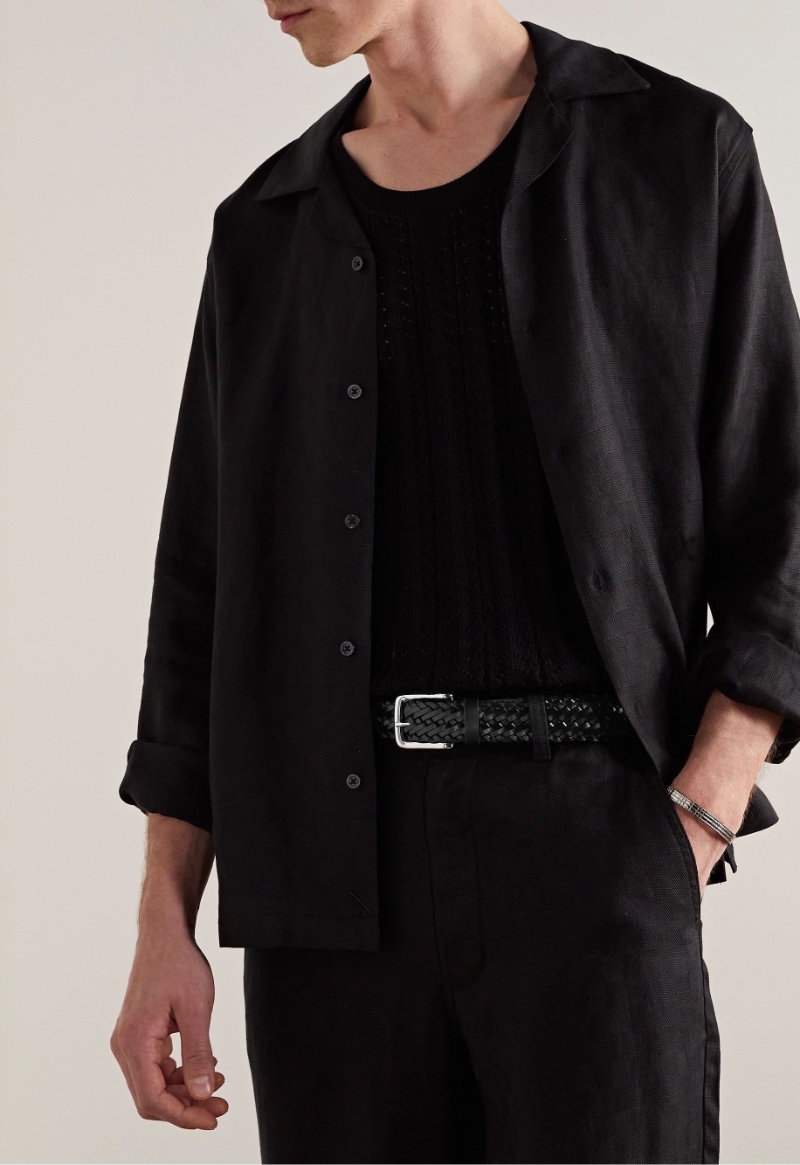
Choose a classic leather belt in timeless shades such as black, brown, or tan. To ensure a cohesive appearance, match the belt color with your shoes.
For added refinement, align the finish of your belt buckle with any jewelry you wear.
Jewelry at Work
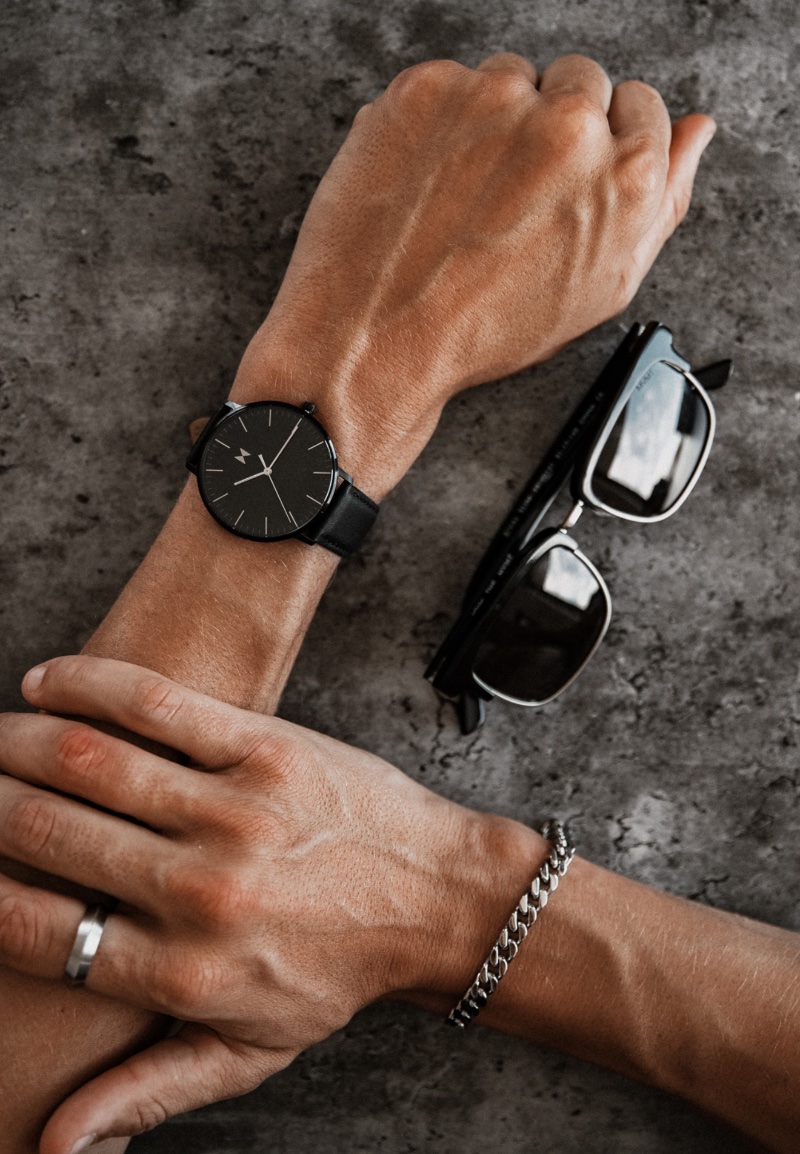
Jewelry provides a discreet way to add personality to your business attire. A classic watch—whether in a sleek metal finish like gold or silver or with a more relaxed leather strap—serves as a timeless accessory.
Complement it with understated bracelets or a simple ring. The key to men’s jewelry is restraint—minimal pieces make the most impact.
Casual Pocket Squares
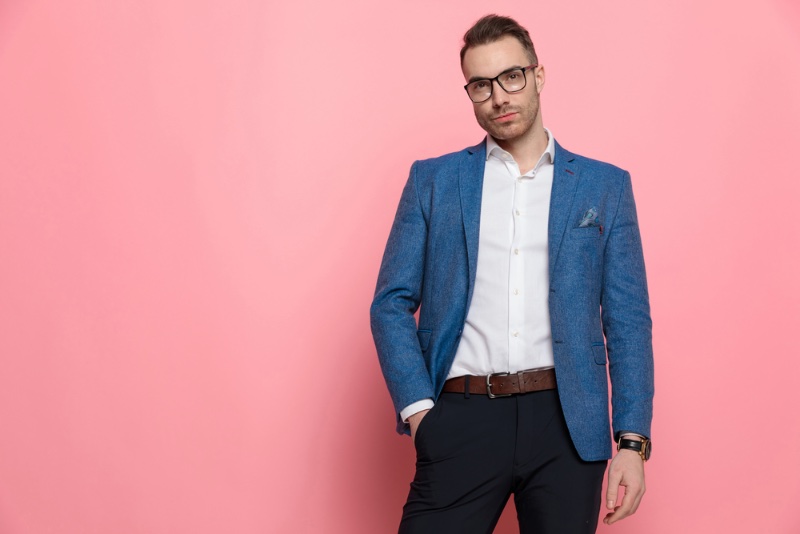
Pocket squares have a rich history, dating back to the Victorian era when they were a symbol of refinement among wealthy gentlemen. Today, they remain a timeless accessory in men’s fashion.
A pocket square brings a pop of color and texture to suits and jackets, transforming even the simplest attire into something memorable.
Business Casual Ties
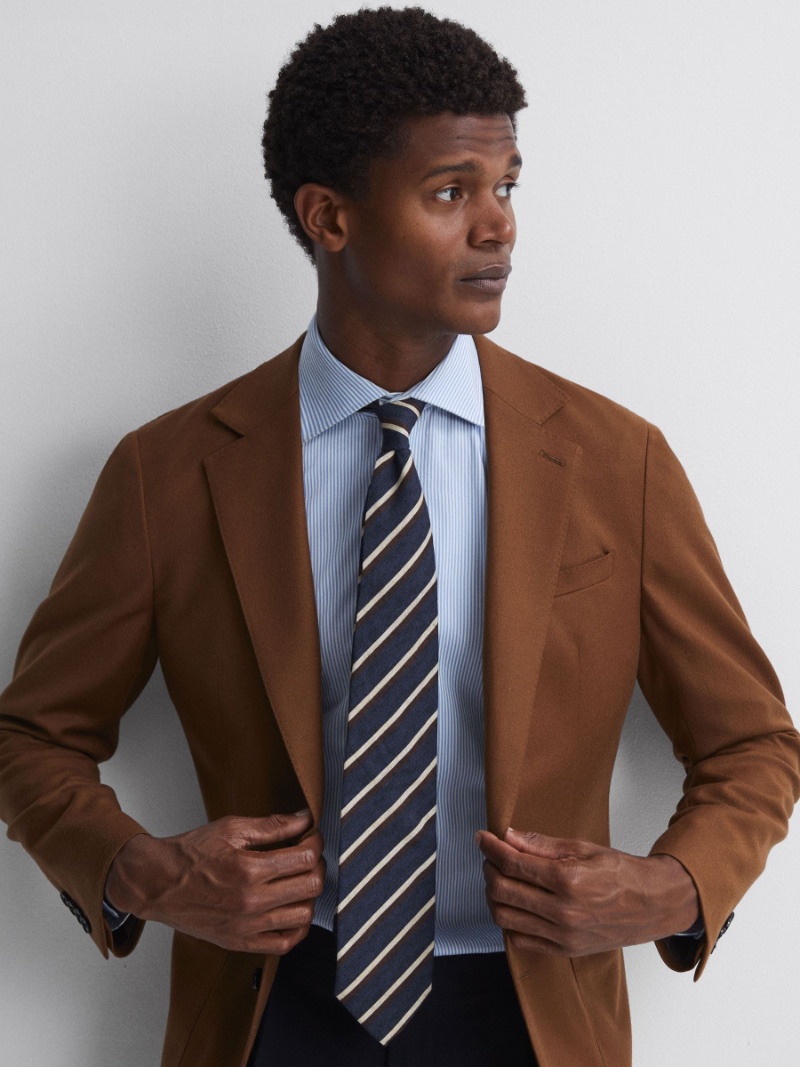
Ties are often essential accessories at professional events. Choose timeless colors such as navy blue or gray, ensuring they complement your outfit and suit the occasion. A well-styled tie adds a standout detail to your business attire.
Hats
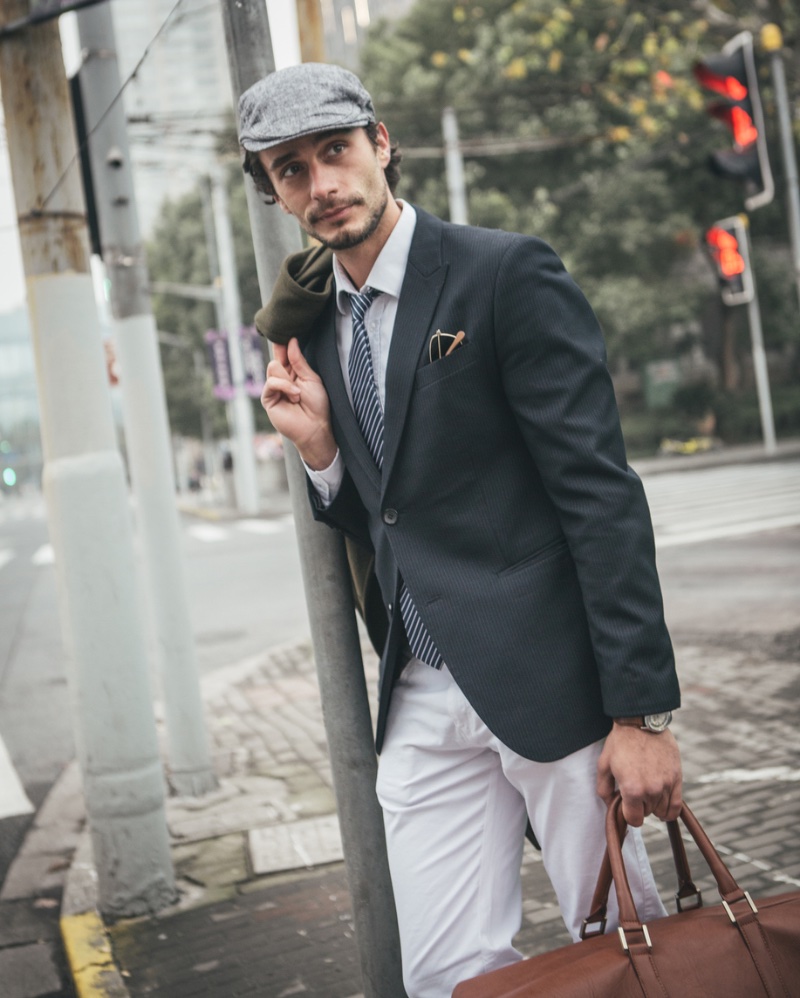
In a business casual setting, understated yet stylish hats are the way to go. Flat caps or newsboy caps strike the perfect balance, adding subtle sophistication without leaning too formal.
Material plays a crucial role in elevating the look. Wool or tweed caps provide a refined texture.
Socks
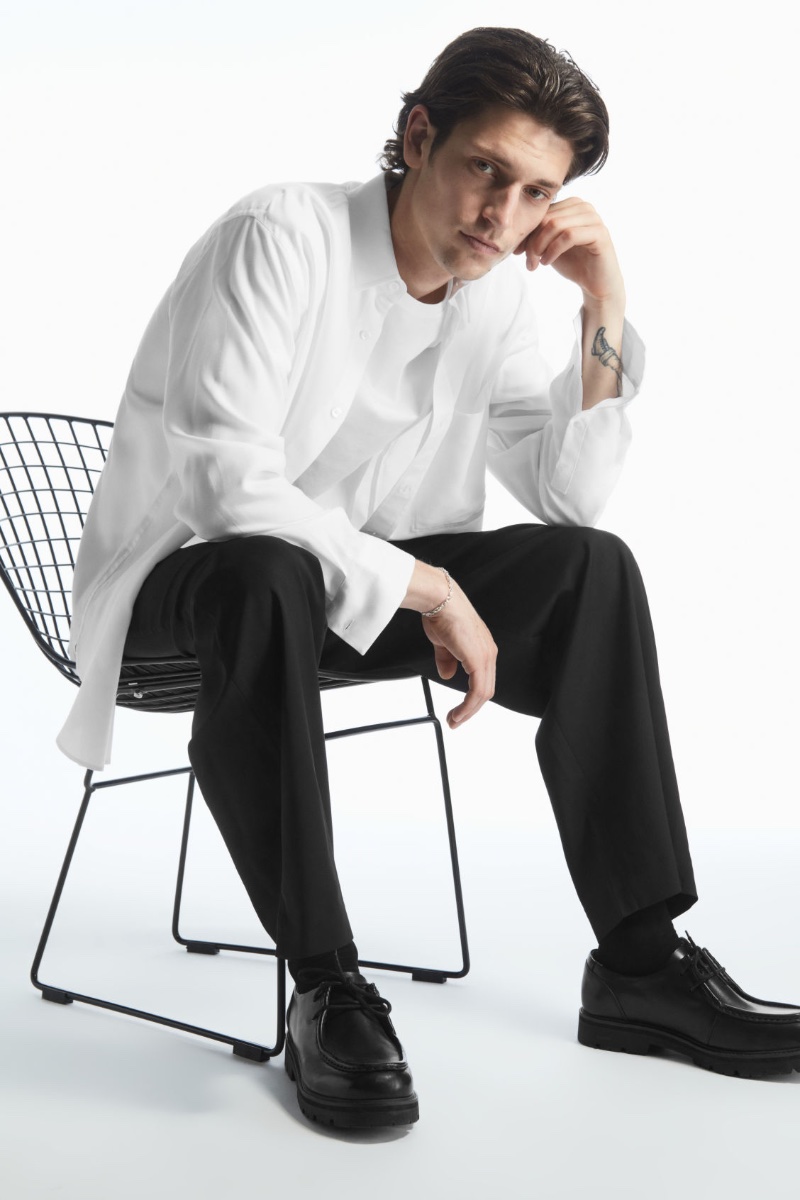
Socks may seem like a small detail, but they’re essential in tying together men’s business attire. For a classic, professional look, choose plain cotton socks in neutral colors like black, gray, or navy.
If you want to add personality, opt for subtle patterns or muted tones such as dark brown or deep blue. The key is ensuring your socks fit well and complement your trousers and shoes.
What Types of Bags Are Ideal for the Office?
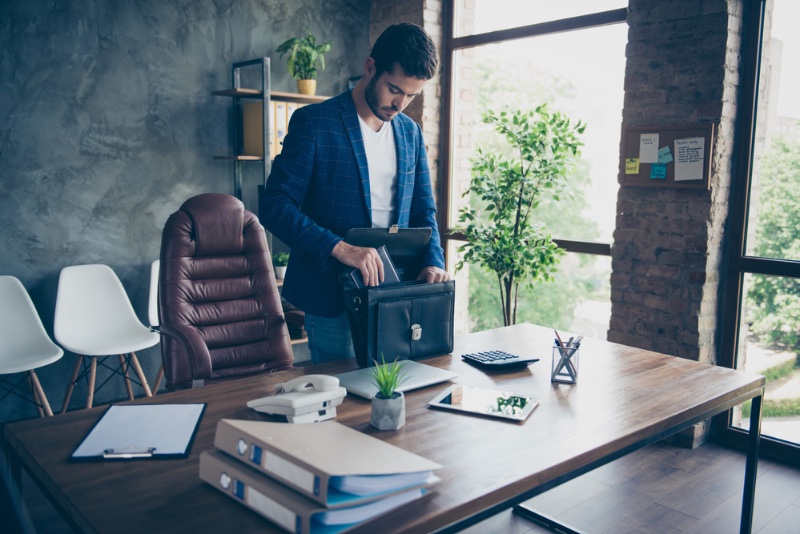
Selecting the ideal office bag involves a balance between functionality and style. First, ensure the bag can accommodate all your work essentials—documents, laptop or tablet, smartphone, and writing utensils.
The style also plays a significant role:
- Season and Occasion: A briefcase often suits professional meetings and business travel, while a classic backpack fits casual Fridays or daily use.
- Material: Leather generally conveys a more professional image compared to canvas.
- Color: Stick to neutral shades like black, brown, or gray for a universally appropriate look.
- Size: Opt for larger bags if you carry multiple items; smaller bags work well for a minimalist aesthetic.
Business Attire Shoes
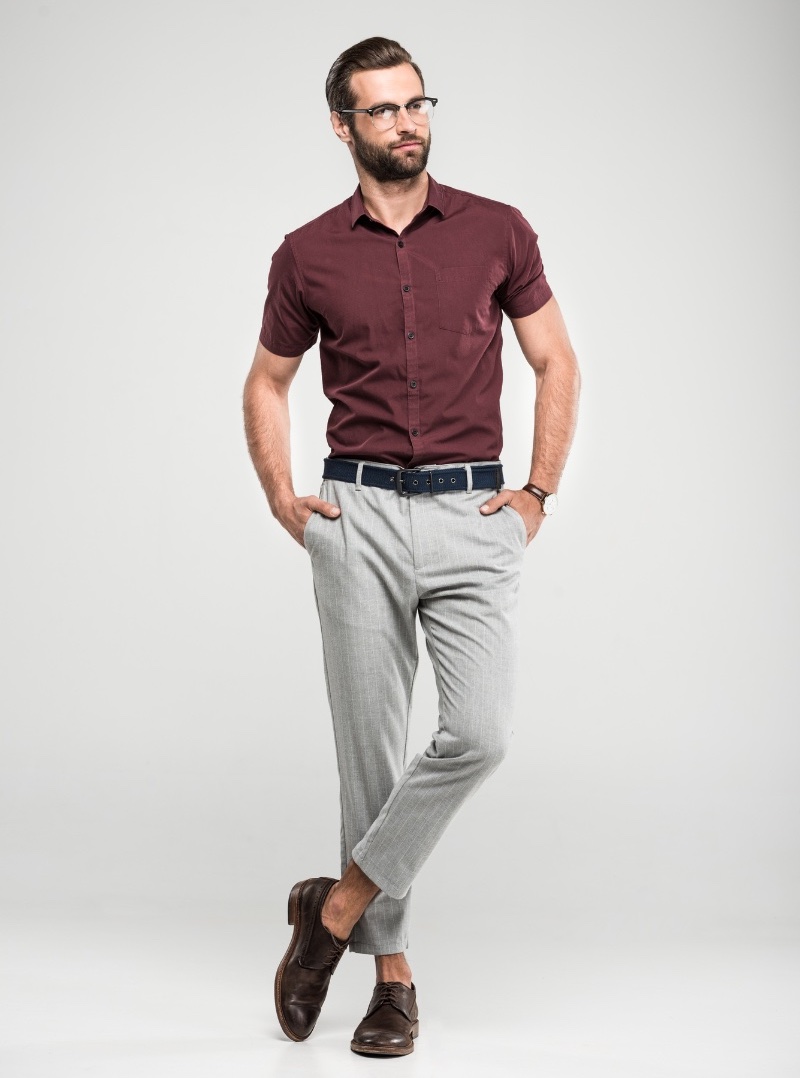
The right business casual shoes elevate any professional look. Whether you’re a traditionalist or a trendsetter, there’s a style to match your needs.
Classic Choices
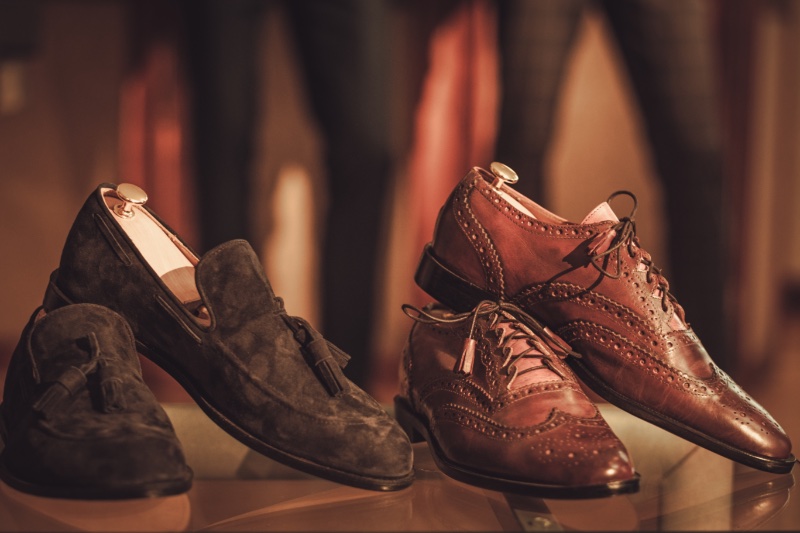
Loafers: Versatile and comfortable, loafers come in various styles, from tasseled to penny. Whether in suede or leather, they suit the office and after-hours.
Oxfords: A timeless staple, Oxfords offer a traditional shape with eye-catching details. Their flexible leather and cushioned insoles are available in sleek black or rich brown and are ideal for office days or formal events.
Casual Yet Professional
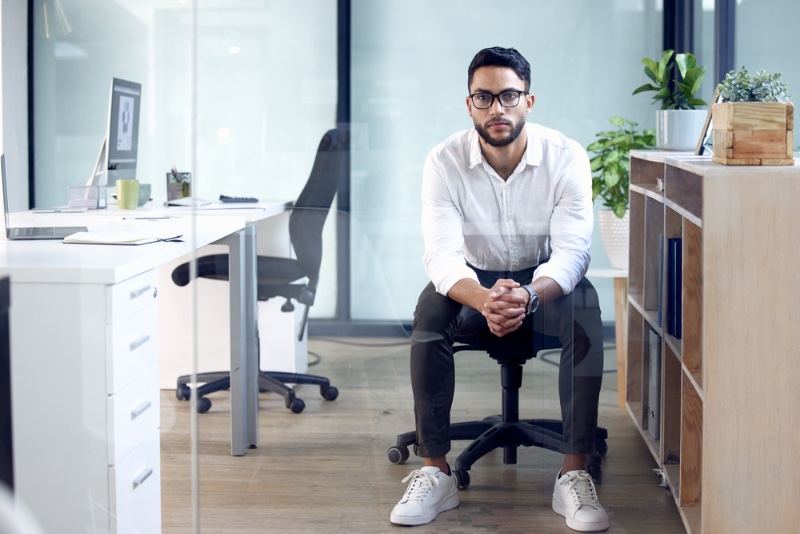
Sneakers: An underrated choice, white or colorful sneakers provide comfort and style. Ideal for a laid-back office setting.
Boat Shoes: These nautical-inspired shoes are summer-friendly and pair well with shorts or chinos.
Modern Twists
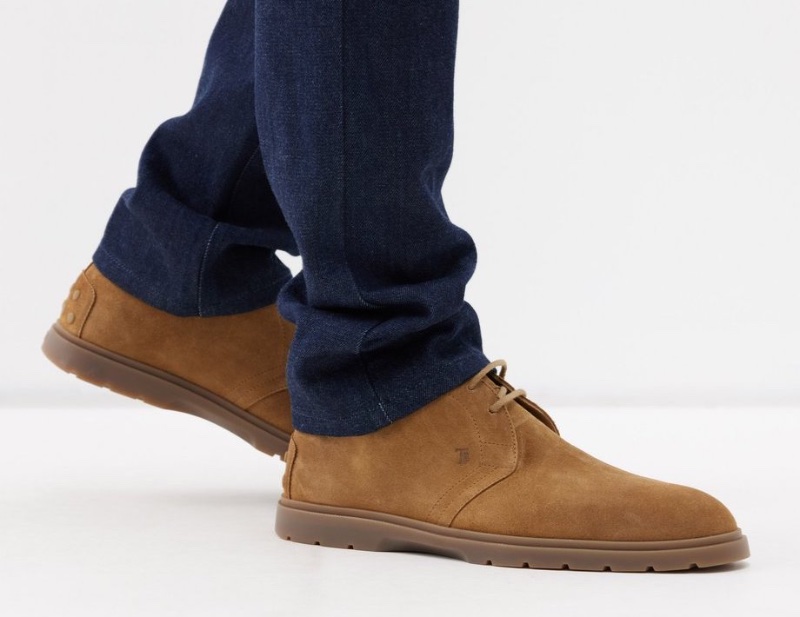
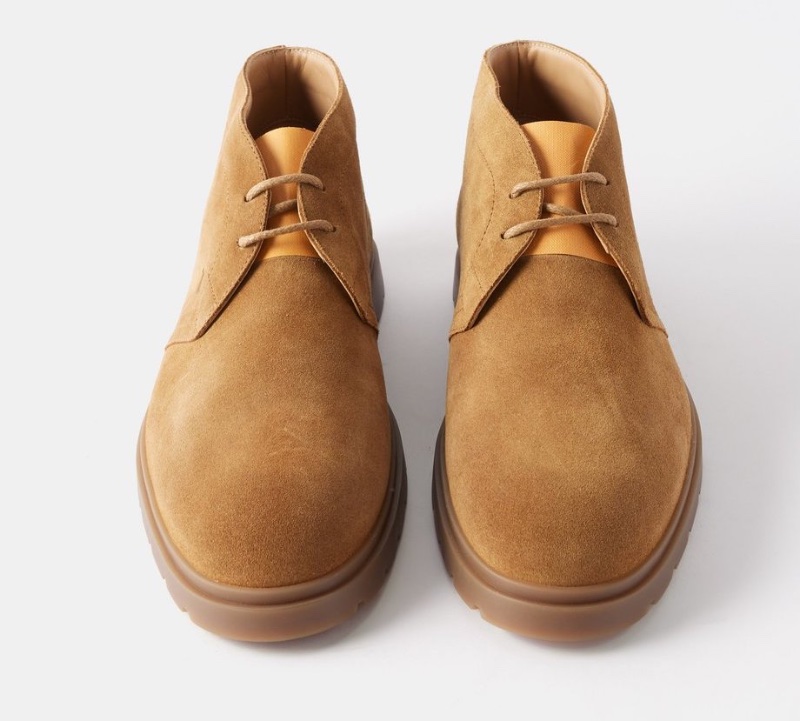
Desert Boots: A smart alternative to formal shoes, desert boots balance style and convenience. They’re versatile enough for the office, dinners, or even weddings.
Monk Straps: These offer a contemporary flair for those looking to modernize their footwear.
Unique Options
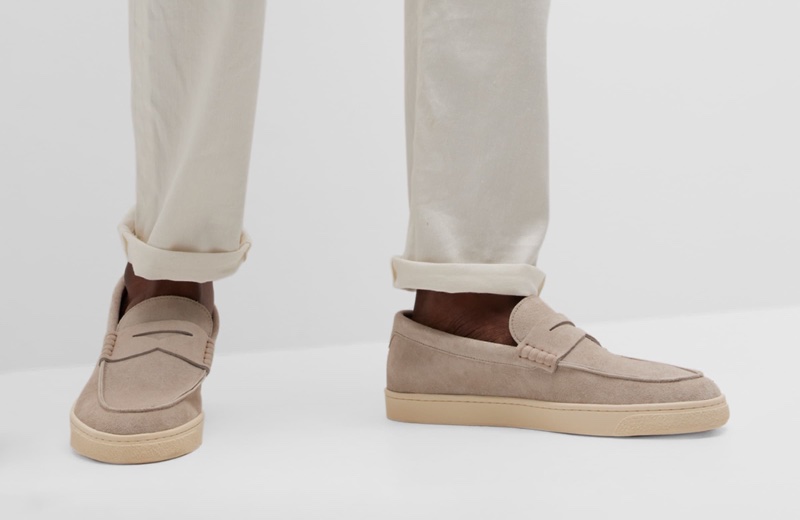
Moccasin-Loafer Hybrids: Brands increasingly blend moccasins and loafers’ design details to create a unique style. These hybrids offer the best of both worlds—casual comfort from the moccasin and the sleek sophistication of a loafer.
Espadrilles: Traditionally a casual choice, modern iterations of espadrilles are making their way into business casual style. With their rope-soled design, they offer a relaxed vibe while still maintaining a sense of professionalism.
What Colors Are Best for a Business Wardrobe?
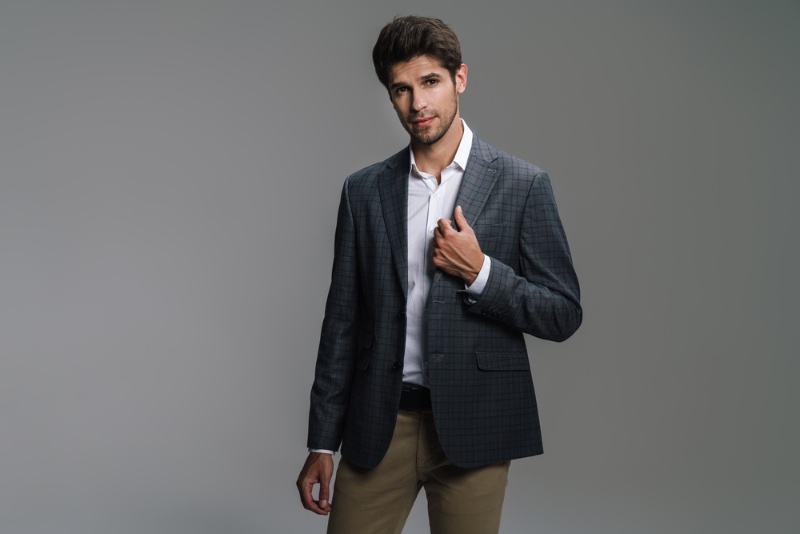
When choosing colors for your business wardrobe, muted tones like navy, gray, beige, and black are timeless. These classic shades exude professionalism and blend into formal and semi-formal environments.
In warmer months, lighter tones such as white or cream provide a fresh and seasonally appropriate option. For workplaces with more relaxed dress codes, incorporating brighter hues can infuse personality into your look while still maintaining a professional edge.
Does Business Affect Grooming Practices?
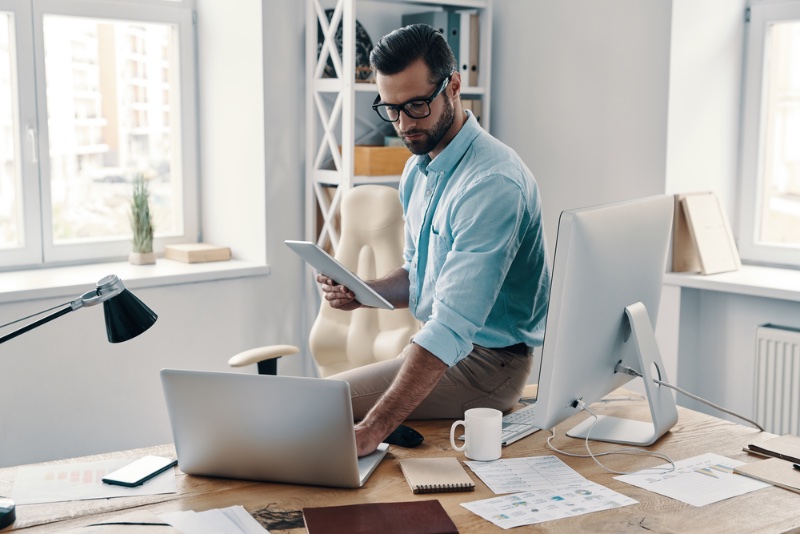
Facial Hair & Hairstyling
Grooming is an essential aspect of dressing for a professional occasion, especially in business casual environments where the guidelines are more relaxed but still significant. For men with beards, keeping them neat and well-groomed ensures a polished, professional appearance.
When it comes to a professional hairstyle, classic options like a crew cut or a side part are reliable choices. If unsure, consider checking your office’s specific guidelines to ensure your hairstyle complements the workplace culture.
Clothing Fit & Maintenance
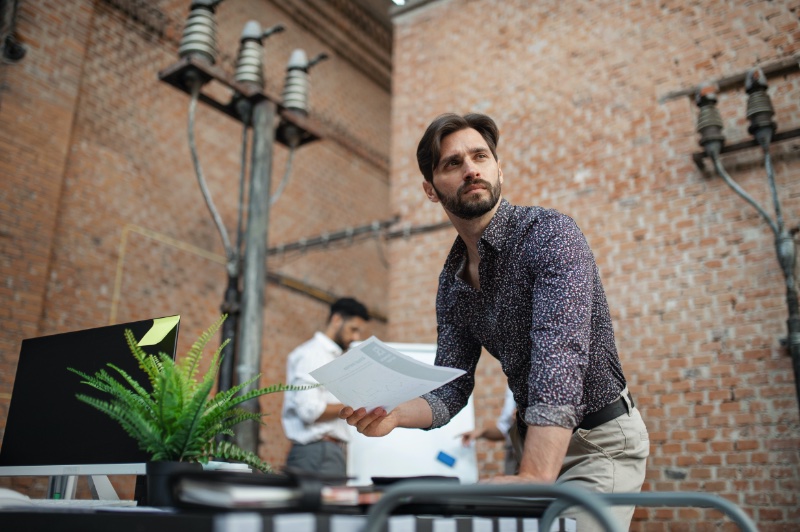
Well-fitted garments, such as a tailored blazer or chinos, demonstrate your attention to detail. Clothing should also be well-maintained and free of stains and wrinkles to reflect a professional demeanor.
The Art of Wearing Cologne
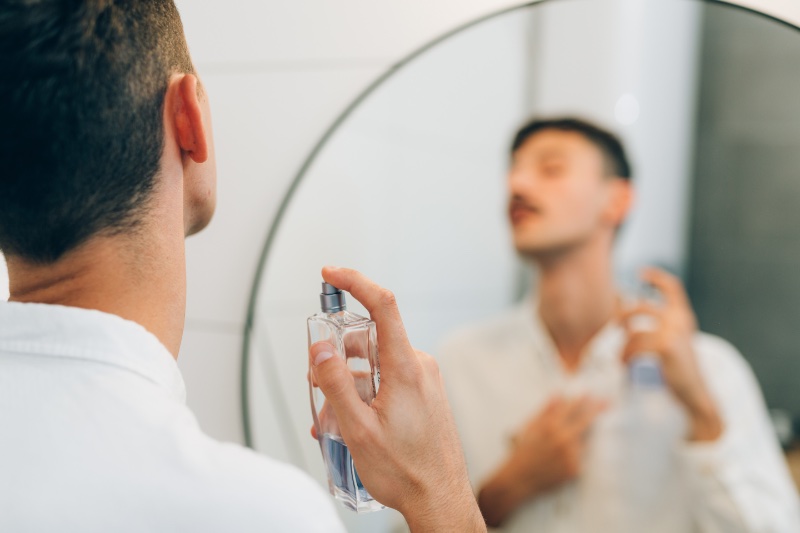
When wearing cologne at work, less is more, and the type matters. An Eau de Toilette is often recommended over other types like Eau de Parfum or pure Parfum. The reason lies in the concentration of fragrance oils.
Eau de Toilette typically has a lower concentration, ranging from 5% to 15%, which results in a lighter, less overpowering scent. This makes it suitable for the workplace, where a subtler fragrance is generally more appropriate.
With their higher concentrations, Eau de Parfum and pure Parfum can be too intense and may not be well-received in a close office environment.
Office Culture & Business Style
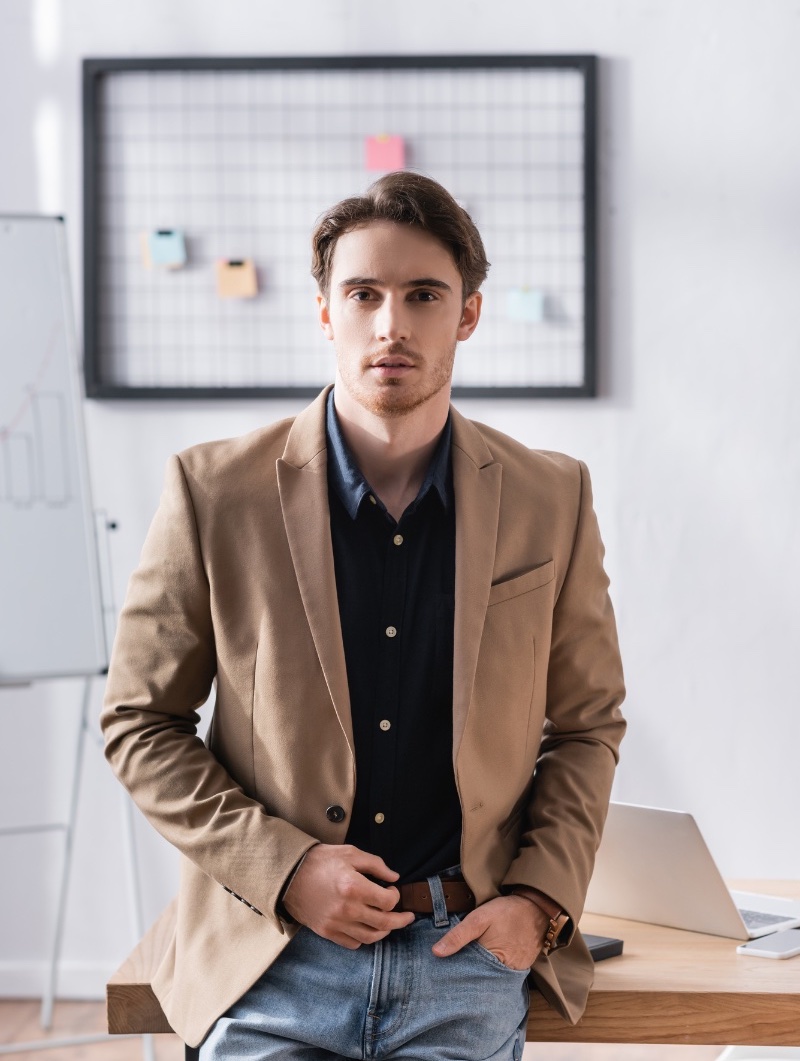
Understanding your office culture is key when curating a wardrobe, as it greatly influences how men’s business attire is interpreted. While general guidelines provide a foundation, the specifics often vary from one organization to another.
Traditional workplaces may enforce stricter dress codes, limiting colors and patterns, whereas more progressive environments might allow for a wider range of colorful and expressive business attire. Additionally, the nature of your role plays a crucial part—industries with regular client interactions tend to require more formal attire, while behind-the-scenes roles may permit a more relaxed approach.
The History of Business Casual Dress Codes
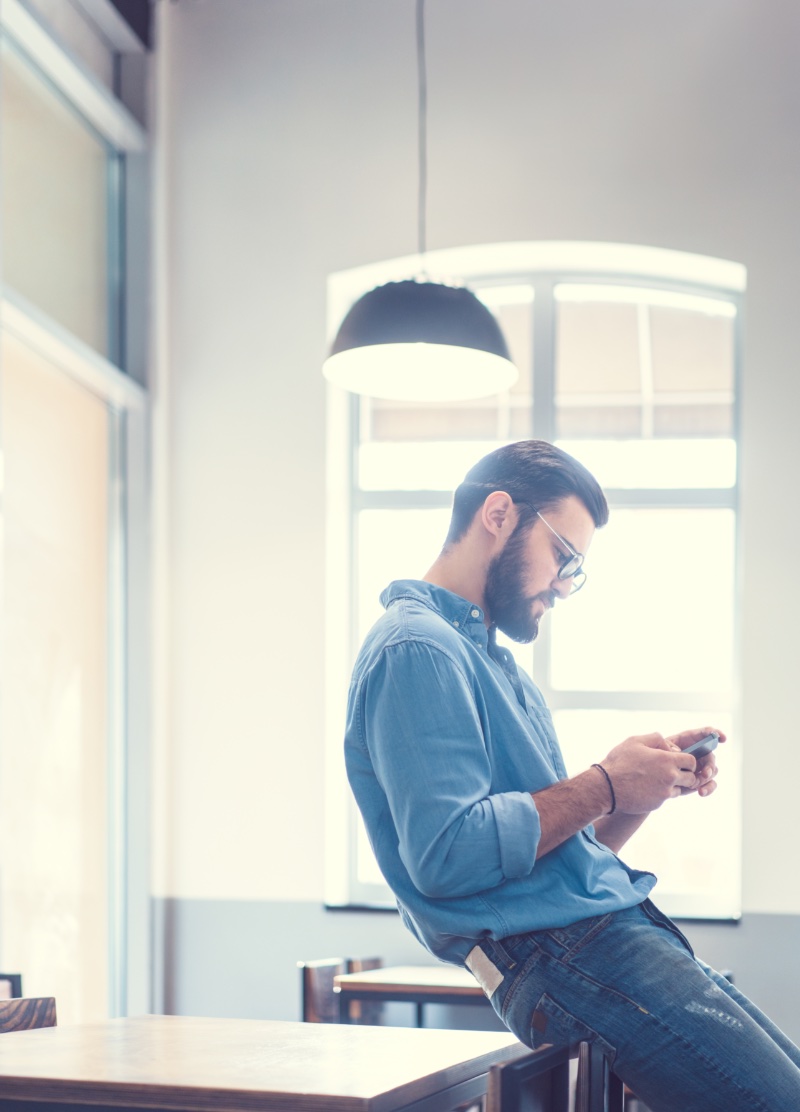
The evolution of business casual for men reflects historical shifts and changing societal demands. It began during World War I, when limited access to dry cleaning pushed men toward practical, easy-to-maintain pieces like sweaters and slacks.
The trend continued through World War II, as fabric rationing and a focus on utility led civilian workers to adopt more relaxed attire in place of traditional business suits. This period laid the foundation for the modern business casual aesthetic, balancing practicality and professionalism.
Casual Friday & Other Dress Code Changes
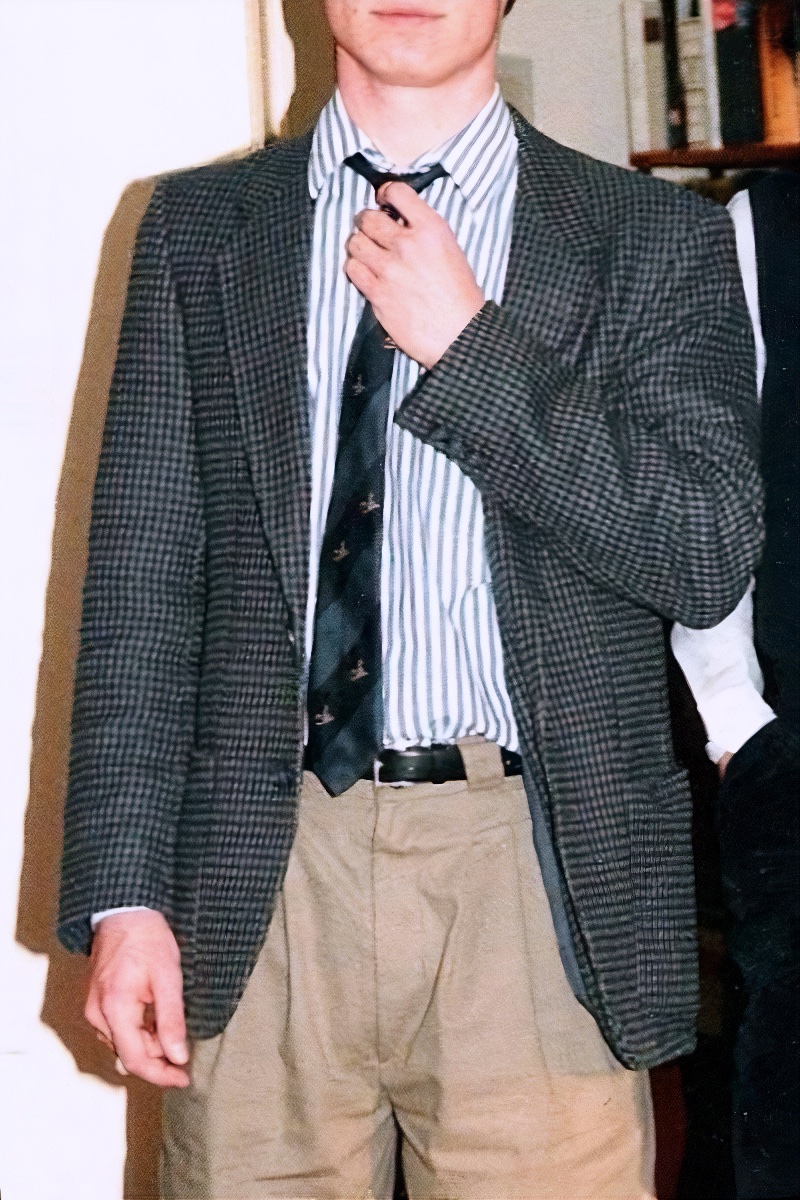
The late 1970s and 1980s brought another turning point in business casual’s evolution, driven by policies like IBM’s Casual Fridays. This initiative allowed men to swap formal suits for sports coats and dress shirts, signaling a shift in workplace norms.
This change not only reshaped office fashion but also expanded the menswear market, fueling demand for relaxed yet professional clothing. In the 1980s, Silicon Valley popularized a modern take on business casual, characterized by khaki pants, practical shoes, and button-down shirts.
By the 1990s, this style had gained mainstream acceptance, though it initially created confusion among HR managers and employees. Over time, however, professional attire guidelines helped establish a clear business casual formality.
Modern Casual Work Attire
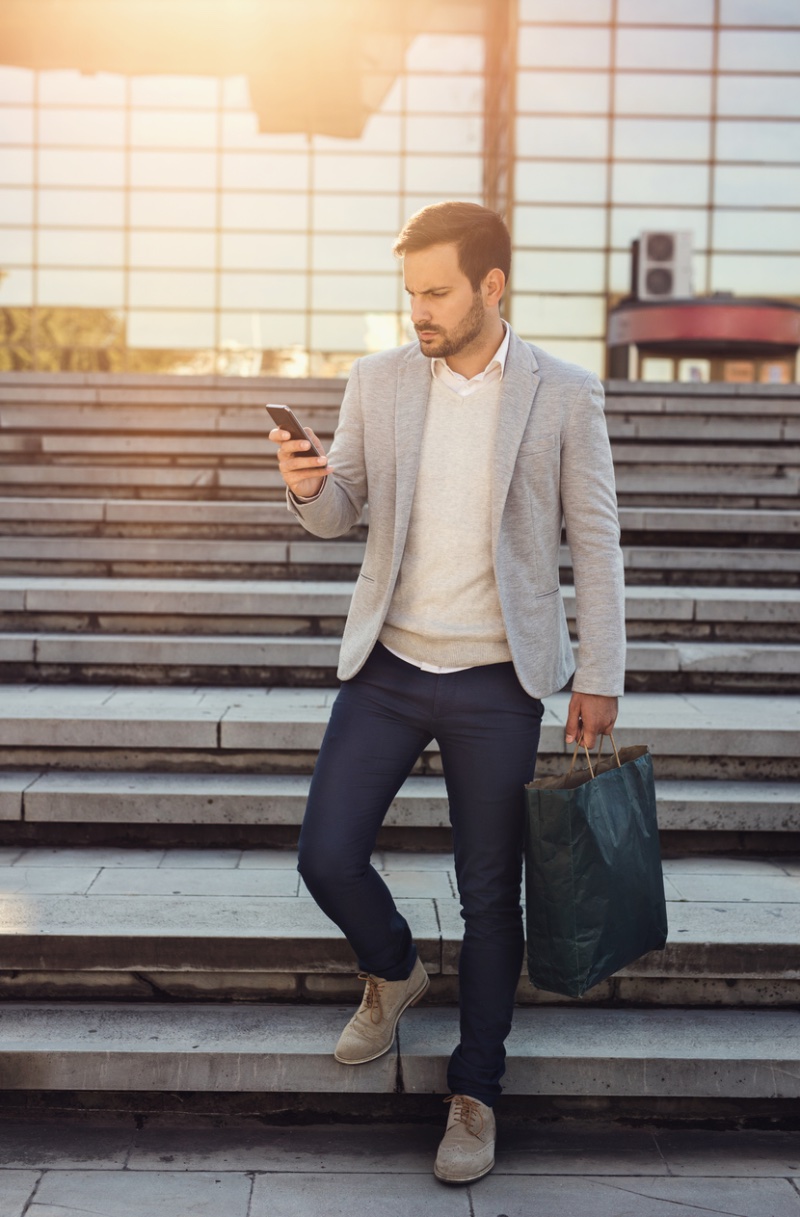
Fashion trends have gradually embraced a more casual approach to business attire, incorporating staples like khakis and loafers. This simplified style has become a cornerstone of modern wardrobes, frequently chosen for job interview attire and occasions like Casual Fridays.
Today’s business wardrobe for men offers significantly more flexibility than the rigid dress codes of the early 20th century. Influenced by technological advancements and the rise of digital communication, many workplaces now favor relaxed yet professional dress codes that align with modern work culture.
The Future of Professional Style
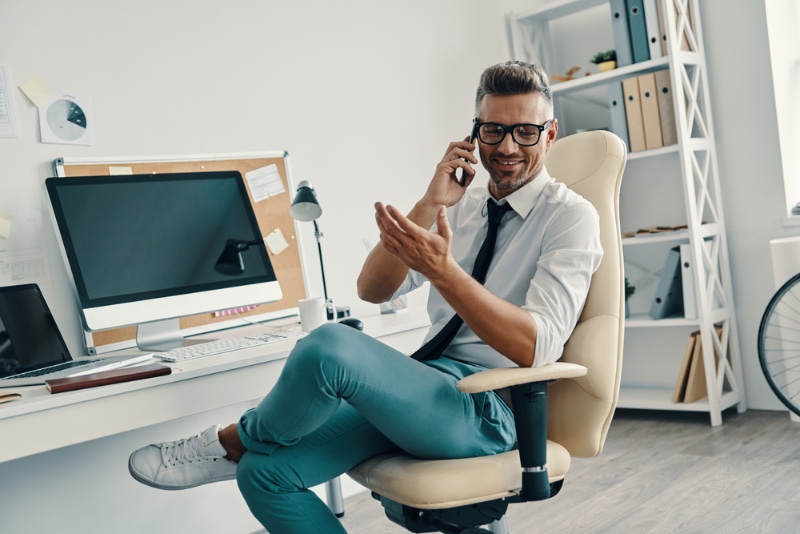
Many experts predict that workplace dress codes will continue to become more lenient. As job markets grow increasingly competitive, employers may adopt relaxed attire standards to attract top talent and foster long-term engagement.
Millennial men, less bound by traditional conventions than previous generations, are driving this change. The future of business attire could see a convergence of dress codes, gradually reducing formality until a universally accepted style emerges as the norm.
Business casual has already solidified its place as the modern standard for corporate attire, a natural progression when viewed through the historical lens of evolving office dress regulations.
Mastering Business Casual for Men
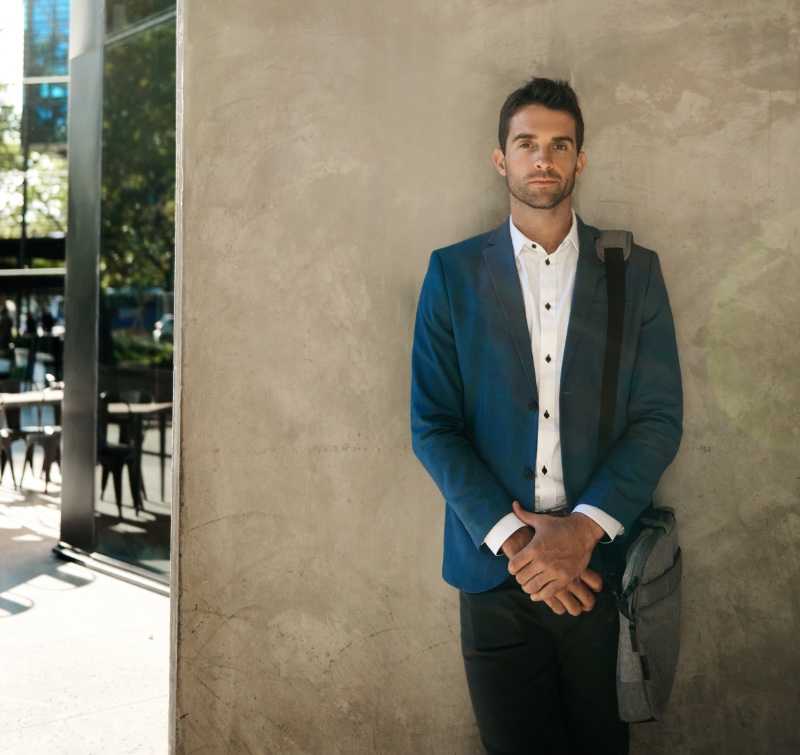
Men’s business casual is a versatile style that combines timeless staples like shirts, trousers, and leather shoes with understated accessories, balancing professionalism and personal expression. The focus is on choosing attire that aligns with your business casual industry standards.
Business casual workplace guidelines can vary, so it’s wise to review your employer’s dress code to ensure your outfit meets expectations. Above all, wearing clothes that make you feel confident and comfortable will help you project your best self.
Common Questions About Business Casual
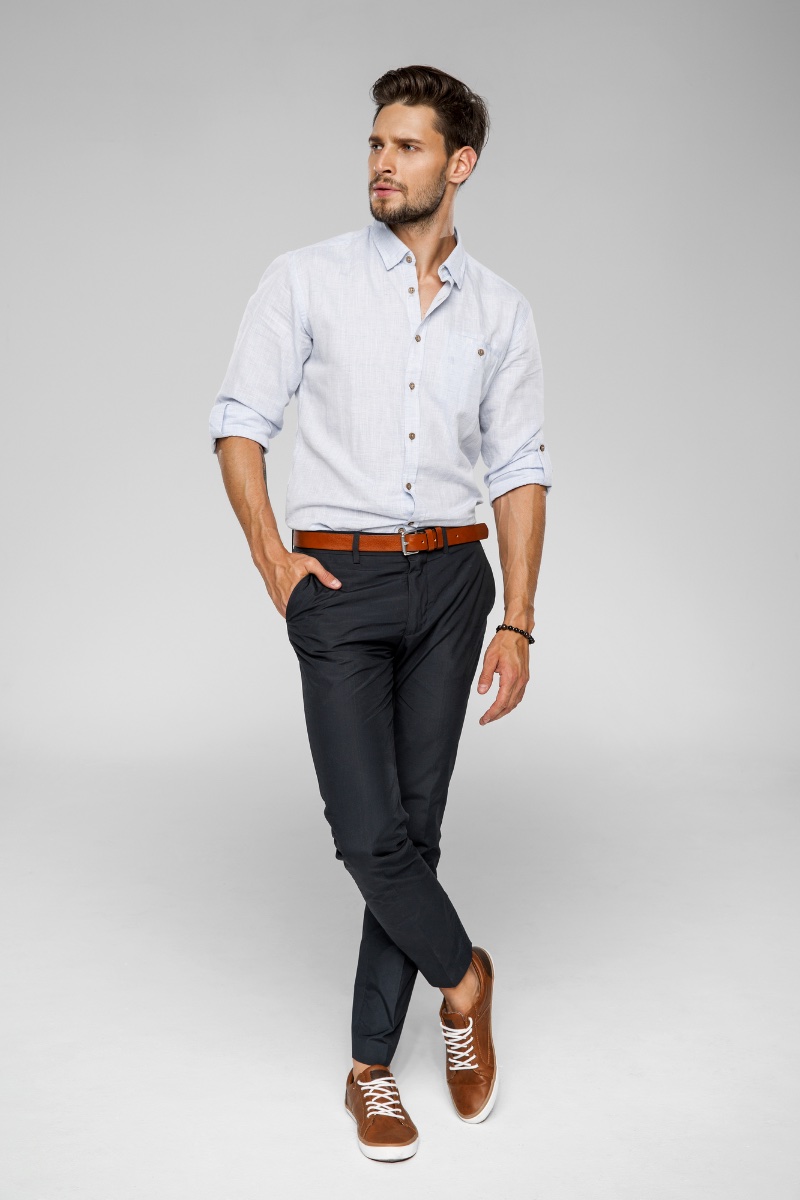
What is business casual for a man?
Business casual attire for men typically consists of dress slacks or chinos, a button-down shirt, and dress shoes. Other accessories, such as a belt, tie, and dress watch, can also be incorporated to complete the look.
Choosing conservative colors and styles for your attire is essential, as bright or vivid clothing may be seen as unprofessional.
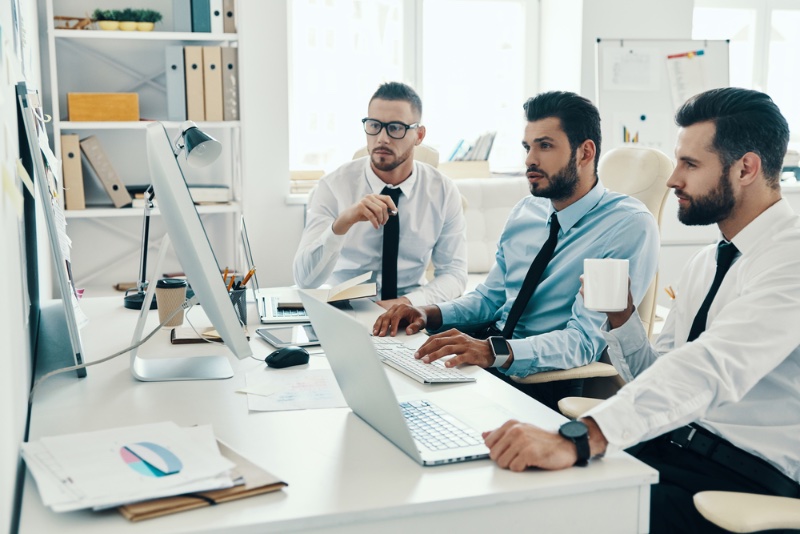
What should men not wear?
Men should avoid wearing several items, including shorts, flip flops or other casual footwear, and athletic clothing. Additionally, avoiding over-accessorizing or wearing flashy jewelry or accessories is best, as these may be considered too informal for a professional setting.
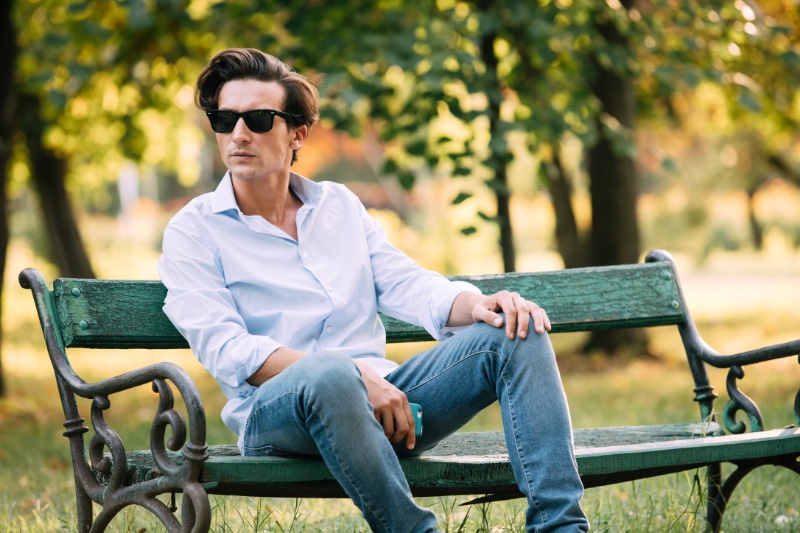
Can men wear casual pieces like jeans?
While jeans increasingly find their way into the business casual outfit ideas, their appropriateness can vary by workplace. Darker washes or more subdued styles are generally more acceptable.
However, it’s advisable to consult your employer’s dress code policy to ensure your choice aligns with workplace standards.

What is the dress code?
A business casual dress code typically refers to a formality slightly less formal than a traditional business ensemble but still more polished and professional than casual or athleisure wear.
This typically includes tailored slacks or chinos, button-down shirts, blazers or cardigans, and other similar clothing items in more muted colors and styles. Generally, it is best to avoid overly casual clothing items or accessories when dressing for a business occasion.
